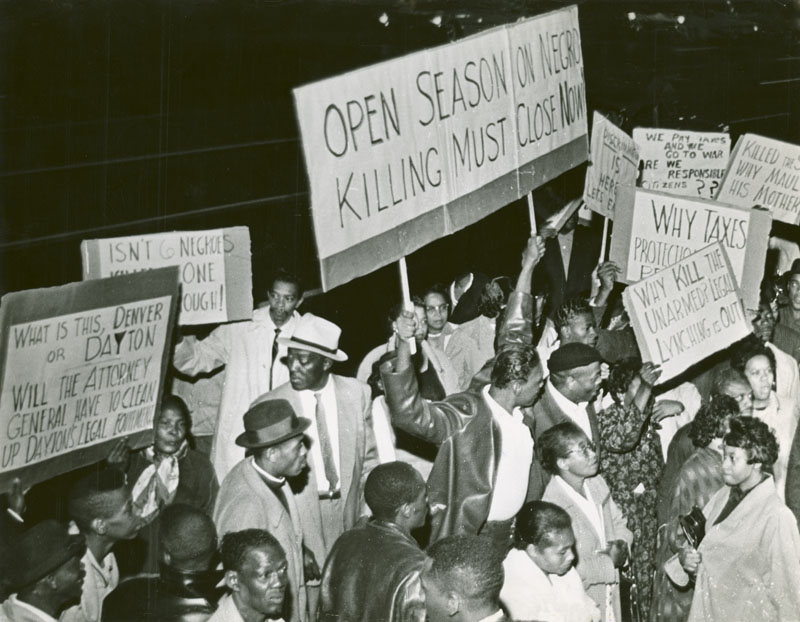 The African-American Civil Rights Movement (1955-1968) refers to the movement aimed at outlawing racial discrimination and restoring voting rights to African-Americans. The movement was characterized by major campaigns of civil resistance. Between 1955 and 1968, acts of nonviolent protests produced crisis situations between activists and government authorities. Federal, state, and local governments, businesses, and communities often had to respond immediately to these situations that highlighted the inequities faced by African Americans. Forms of protest included boycotts, “sit-ins,” marches, and a wide range of other nonviolent activities. The Congress of Racial Equality (CORE) was an active participant in protests in Dayton, Ohio. The Dayton CORE was led by W.S. McIntosh.
The African-American Civil Rights Movement (1955-1968) refers to the movement aimed at outlawing racial discrimination and restoring voting rights to African-Americans. The movement was characterized by major campaigns of civil resistance. Between 1955 and 1968, acts of nonviolent protests produced crisis situations between activists and government authorities. Federal, state, and local governments, businesses, and communities often had to respond immediately to these situations that highlighted the inequities faced by African Americans. Forms of protest included boycotts, “sit-ins,” marches, and a wide range of other nonviolent activities. The Congress of Racial Equality (CORE) was an active participant in protests in Dayton, Ohio. The Dayton CORE was led by W.S. McIntosh.
Achievements during this phase of the Civil Rights Movement were The Civil Rights Act of 1964, that banned discrimination based on “race, color, religion, or national origin” in employment practices and public accommodations; the Voting Rights Act of 1965, that restored and protected voting rights; and the Fair Housing Act of 1968, that banned discrimination in the sale or rental of housing. This movement inspired present and future generations to take action for their civil rights.


















9 Responses to Civil Rights Movement